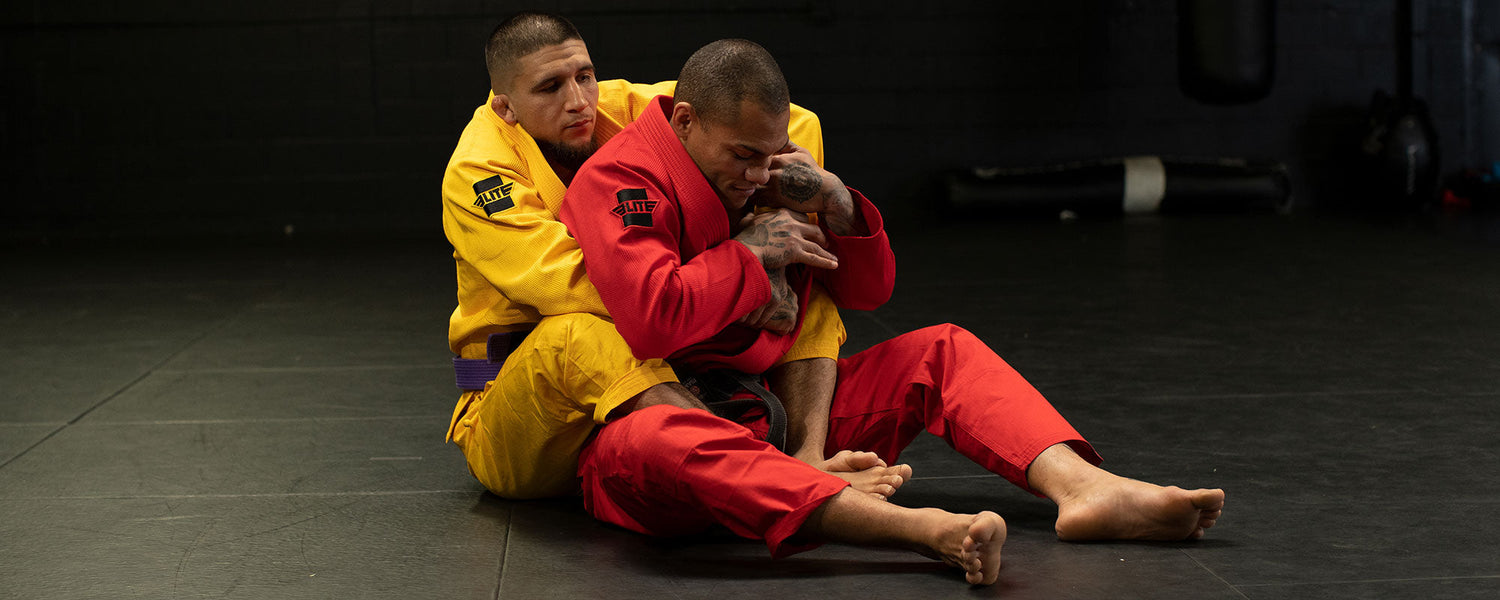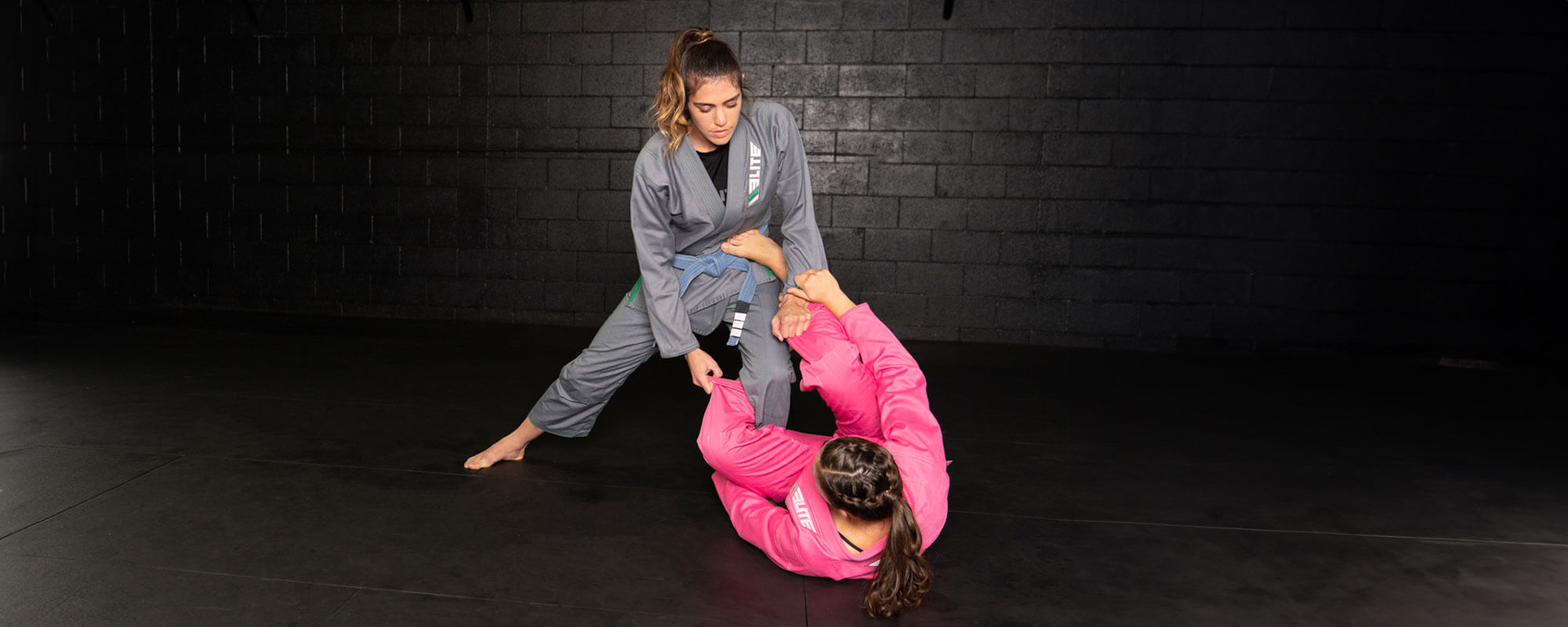The rear mount in Brazilian Jiu-Jitsu (BJJ) incorporates one of the most feared and useful submissions known to practitioners, the rear naked choke. It is a destructive choke that is simple to execute after taking the position of the back mount. Not to mention, you can finish a fight very rapidly if you are able to apply that technique successfully.
Unlike other types of submissions like an armbar, which a fighter can withstand, once the rear naked choke is applied and locked in, the fighter cannot escape from it. The utmost importance that you comprehend is that this choke works on the simple principle of entanglement that any fighter can apply in BJJ. It requires detailed practice, with which the fighter gets to know about the perfect angle and the application of accurate pressure.
Table of content
1. What is a Rear Naked Choke?
The aim of a rear naked choke is not to strangle the opponent by wrapping the arms around the neck. The target is to halt the circulation of blood to the brain. It usually takes five to ten seconds to cut the blood supply to the brain for one to lose consciousness. At the same time, it takes several minutes to choke someone into unconsciousness.
The neck is an incredibly vulnerable region of the body, and learning to execute this technique of the rear naked choke and quickly respond when someone taps out is crucial. In this article, we will focus on the rear naked choke with an explanation of the origin and the mechanism of the details.
2. Origin of the Rear Naked Choke
The mata leão choke is one of the oldest techniques in grappling combat, not just developed during the MMA stage. It has been established in the martial arts of judo, where it is known as the hadaka jime. It is a type of choke that does not utilize the gi, hence known as ‘naked choke’. In the context of Judo, hadaka jime can be made to refer to the mata leão and also the back short choke using palm-to-palm entanglement to strangle the opponent.

The art of BJJ has incorporated many techniques from various martial arts. Later, Gracie introduced the rear naked choke in Brazilian jiu-jitsu, which was considered the most effective submission method. Considering this ultimate move, it later became part of mixed martial arts (MMA).
The use of the rear naked choke has been instrumental in the progression of grappling sports, be it Grappling tournaments, judo , BJJ, catch wrestling, etc. Royce and Rickon Gracie have played a fundamental role in the awareness of the rear naked choke in BJJ.
3. Mechanism of RNC
It is the technique that involves the incorporation of the arms and hands that target the head. This is the submission method that is applied from the opponent's back. The position is the back mount which is used by most of the fighters.
It is a submission technique that can be applied even in the standing position. If the technique is used to be applied on the ground the fighter creates the hook with the foot. It requires taking control over the opponent by holding them with the chest and keeping them close to their back. There should not be any space in between.
The fighter chokes the arm, after sliding it at the front of the neck. The fighter uses the hook locks to control the movement of the legs. The bicep is kept at the neck, creating pressure on the neck area.
To keep the hand in place, the fighter uses the other hand to restrict the movement of the hand. It also helps to stop the movement of the head. The rear naked choked (RNC), the fighter tightened the grip of the arms to increase the pressure on the neck area, the pressure is increased after leaning backward.
It takes less than ten seconds to render the opponent in place, and it is the blood choke that stops the blood flow from going towards the brain. This choke creates pressure on the trachea that stops the motion of the opponent.
4. Execution of Rear Naked Choke

The rear naked choke is a versatile move that creates multiple opportunities for grapplers and fighters. It is a choking method that does not require the use of the BJJ Gi, which is why the word “naked” is used. It is a powerful strangle that works and has a simple implication.
4.1. Take the Position
The first step is to take the position of the back mount or rear mount; it is the most difficult position to take as the flighter does not give the space to get to the back position. It is the method that takes the execution of the proper hooks along with the proper angle.
4.2. Maintain the Position
The important step is to get at the back of the opponent and try to maintain the position. Keep your chest in contact with the back of the opponent. This will help you to restrict the movement of the opponent.
4.3. Grip of the Hands
After that, the fighter places one hand over the shoulder and the other hand under the armpit. This step will ensure that you have taken control over the upper body of the opponent. Create the hook with the placement of the hands over the other. This will lock the movement of the opponent.
4.4. Grip the Neck
The fighter needs to grip unlock the hand and keep the underarm hand over the torso while moving the other hand over the neck. Hold the shoulder to have a firm grip at the front of the neck.
4.5. Hook of Hand
Create the hook with the hand by moving the hand upward where the fighter has made the entanglement to create the strangle at the neck.
4.6. Move the Hand Downwards
As you hook the hand, move it downward in a direction that should move at the side of the shoulder bone. It will hold the hand in place as the pressure is created at the back, keeping the hand intact.
4.7. Keep the Hand at the Neck
The next step is to unhook the hand; instead of taking it at the front, move the hand to the back of the head. Slide the first arm at the bicep and the second arm at the back of the head.
4.8. Finish the Choke
To finish the choke, apply pressure on both of the arms. Move the under-neck hand in the backward direction, whereas moving the backward hand in the forward direction will create intense pressure in the neck area, and the opponent will submit for a tap.
5. Frequently Asked Questions (FAQs)
5.1. What are the common mistakes in the application of Rear naked choke RNC?
The rear naked choke is inarguably the best choke and demands proper attention to the few details. One of the most common mistakes is leaving the arm unattended, which creates the opportunity for the fellow fighter to get out of the entanglement.
Most of the fighters leave the space at the front or the back of the neck.
The next most common mistake is not to tuck the hooking hand. This allows the fighter to escape the strangle.
Keeping the forearm or the hand in front of the neck creates direct contact with the throat. Always keep the elbow at the front of the throat, which must stay or align with the nose.
5.2. What is the advantage of the rear naked choke?
Rear naked choke is the submission method that is applied even from the standing position. The crucial step is to take the back of the opponent for the application of the choke.
6. Final Words
The rear naked choke (RNC) is a versatile move that is the cornerstone of MMA and BJJ. As the fighter needs to target the fragile or delicate part of the neck, the fighter is required to learn the proper dynamics for executing the RNC.
The name rear naked choked signifies that the practitioner or an athlete does not need a BJJ Gi for the application of the choke. The word “naked” shows that the choke is applied without the help of anything else; only the bare use of hands can help to choke the person.
It is a high-percentage choking technique that is applied from the back. The strangling of the arms creates pressure on the neck, restricting blood flow upward to the brain. The external pressure exerted on the throat blocks the carotid arteries that take oxygen to the brain.
The rear naked choke requires special attention to render the opponent in place. If a choke is applied for more than eight seconds, then it will make the opponent unconscious.












Leave a comment
This site is protected by hCaptcha and the hCaptcha Privacy Policy and Terms of Service apply.